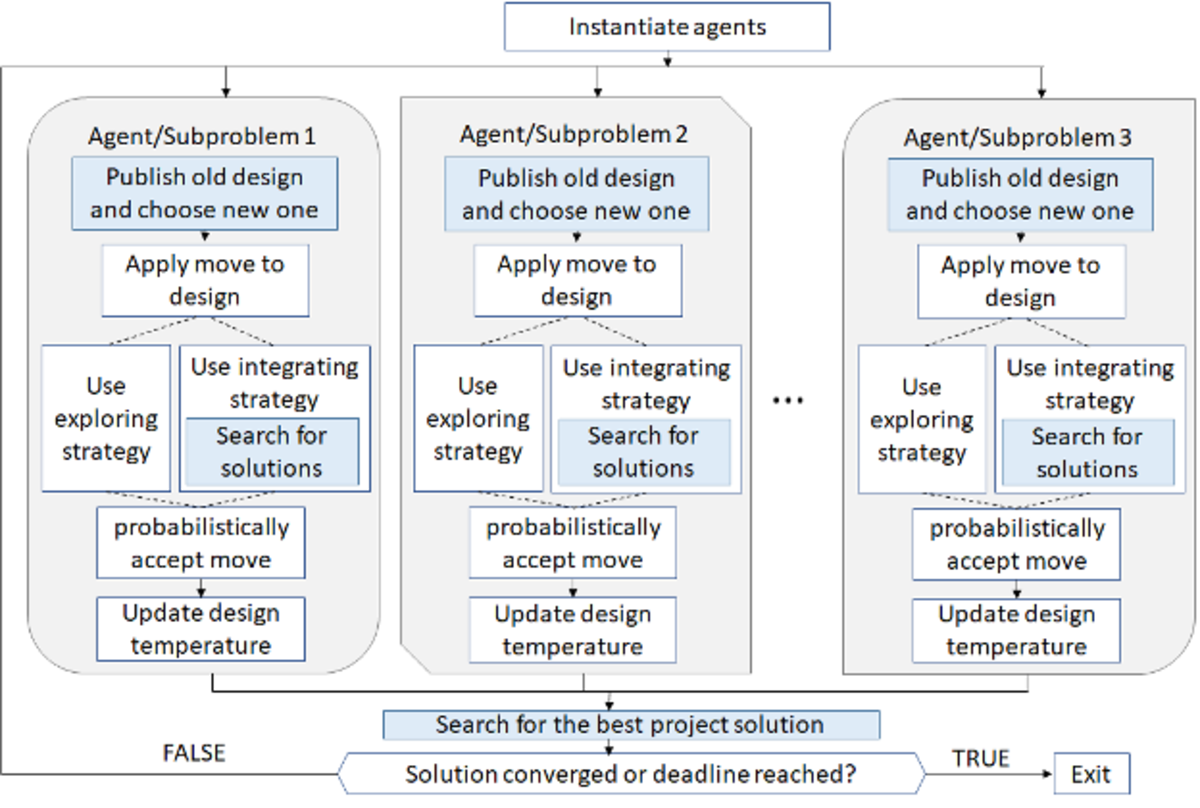
Using Multi Agent Systems to Computationally Study Set-Based Concurrent Engineering
Concurrent engineering presents opportunities for engineering design teams to develop the parts of a project in parallel and resolve problems as they appear. Set-based concurrent engineering (SBCE) proposes a method to reduce the required communication and resulting rework by maintaining many candidate designs for each subproblem throughout a project, rather than only one candidate for each subproblem; however affects on the process is difficulty to study in situ. This work introduces the Point/Set-Organized Research Teams (PSORT) framework and validates it against statements made in industry studies of SBCE. This work then applies the PSORT framework to study how SBCE interacts with various team and problem structures, using problem coupling and varying timespan to further elucidate the impacts of the process. This work suggests that SBCE lowers the need for communication and rework on coupled problems, allowing projects to achieve greater concurrency, and that SBCE can synergize with communication to break through barriers in the design space to create new designs. These benefits are most strongly expressed in large projects with many subproblems and agents. In contrast, SBCE is suggested to be detrimental in smaller and shorter projects where available development effort is limited, or on uncoupled problems where SBCE’s division of development over many designs results in greater quality losses and its benefits to coordination are not needed. These results pose new hypotheses that may serve as the basis for further industry case studies or human subjects studies on new problems.

